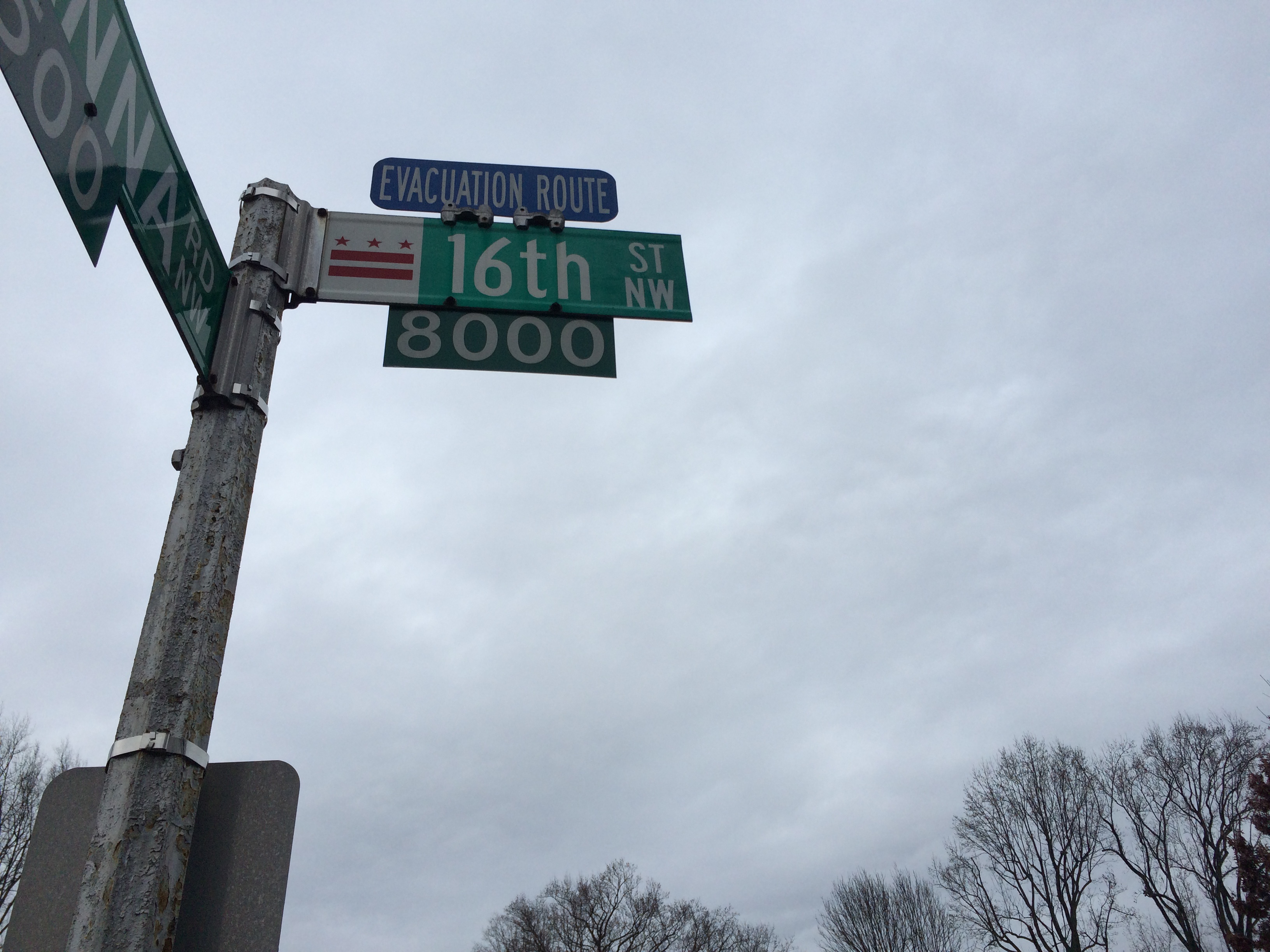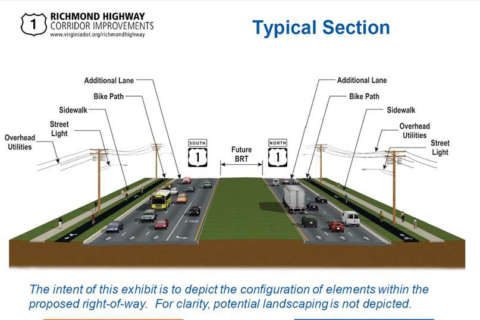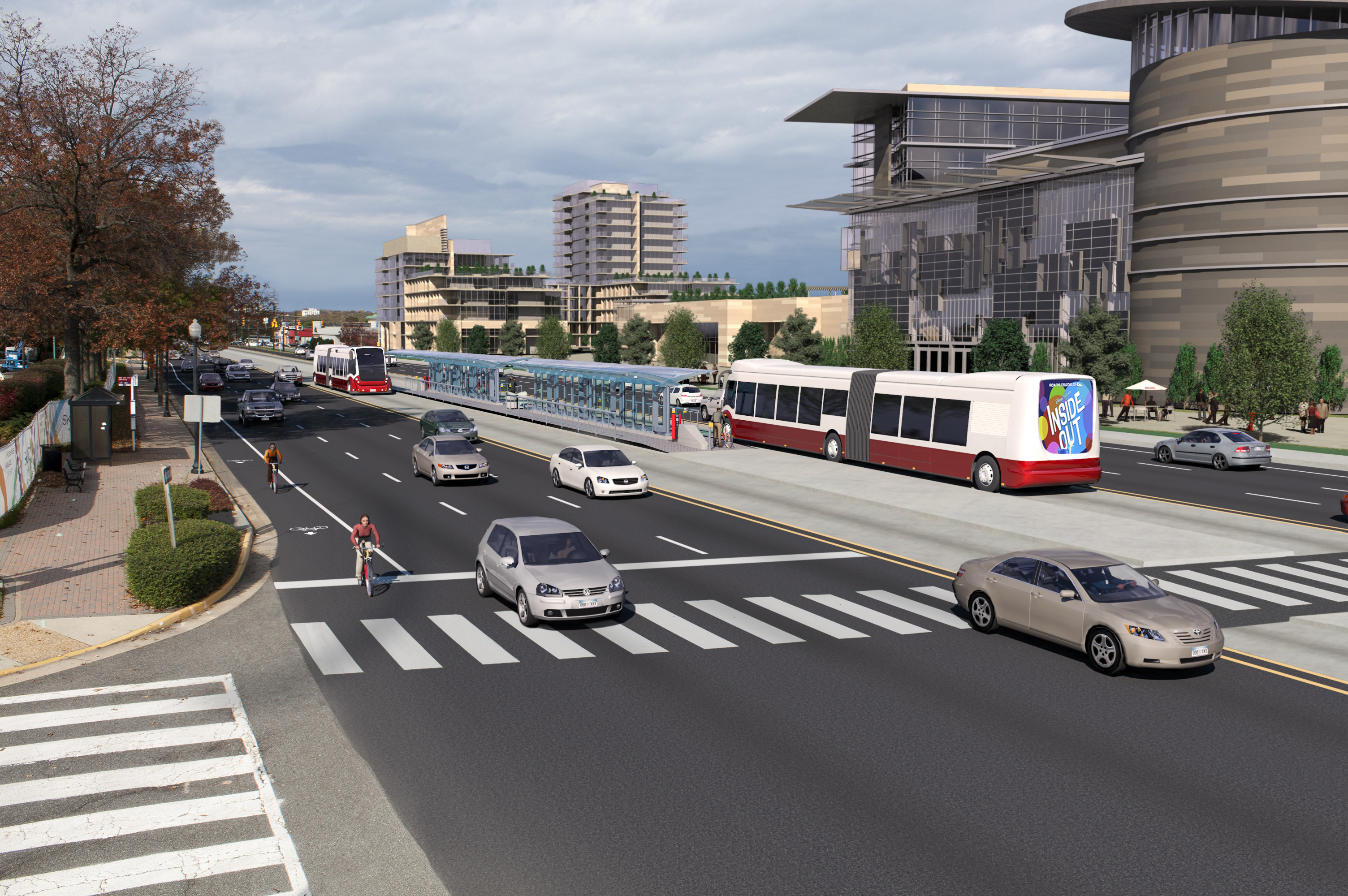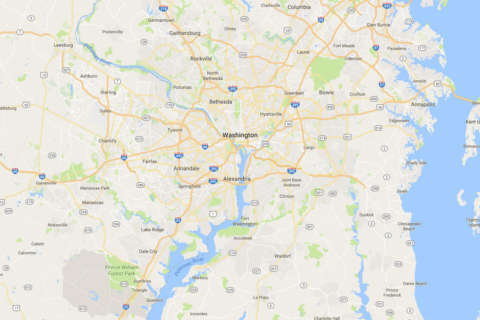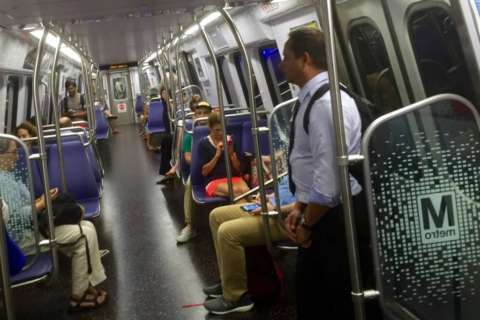WASHINGTON — Drivers in the District could soon see automated enforcement of bus lanes, in addition to existing red light and speed camera tickets.
As the city looks to add more useful bus lanes to speed trips in key corridors, a District Department of Transportation study is getting underway through Howard University and Virginia Tech civil and environmental engineering Associate Professor Kevin Heaslip to analyze the options for photo enforcement of bus lanes and other bus zones in the coming years.
“If people are using the bus lanes inappropriately, then it causes the buses to be stuck in the same traffic that all of us are stuck in when we’re driving our vehicles, and that’s not really a good thing, especially when you think that these buses in the peak hours would be heavily loaded with passengers,” Heaslip said in an interview.
The short bus lanes the District has are often ignored by drivers, a DDOT presentation about the study said, which reduces the cost-saving and timesaving benefits of having the bus lanes in the first place.
The presentation said the “no parking” rules at bus stops are well enforced, but it is hard under the current policies to prevent drivers from stopping or waiting in a bus zone.
“Vehicles interfering with a bus serving the stop can slow the route down and lengthen travel times,” the presentation said.
Automated enforcement could push more people to follow the rules even when police officers are not around, a Metropolitan Washington Council of Governments report completed last year suggested.
Bus lanes could soon be even more important, as Metro finalizes a major overhaul of its bus system.
The details of the overhaul remain closely guarded within the agency, but the District is in the midst of separate work on bus lanes along 16th Street and H St. NW.
Along H St. NW near the White House, a bus-only lane that would run against the flow of existing traffic, would turn the road into a two-way street for buses only between New York Ave. NW and Pennsylvania Ave. NW.
More than 30 Metrobus routes stop in that area, including trips that carry about one in five of all Metrobus trips each day. Other transit agencies also serve the area, and commuter buses could be permitted to use the lanes to pass through.
A 2013 study found a bus lane there could cut bus travel times by 30 to 70 percent, especially if delivery truck or other drivers halt stopping in the curb lanes, reducing the number of buses needed in the area and allowing for more service elsewhere.
The estimated savings were up to 7.5 minutes for westbound bus riders and up to 2.5 minutes for people in cars.
Future bus-only lanes could be added elsewhere.
“We’re looking at the ability for DDOT to manage and operate automated enforcement by statute, and also looking at technologies that they could use to conduct the enforcement as well,” Heaslip said.
Options include cameras mounted on buses, that could automatically snap photos of drivers illegally driving or parking in bus lanes or bus stops, or cameras that are stationary on the side of the road similar to the District’s speed cameras.
Bus mounted cameras cost about $10,000 plus maintenance for each bus, while stationary cameras cost about $65,000 per camera plus maintenance costs, the Council of Governments’ study estimated.
DDOT appears to be leaning toward stationary cameras at the moment, especially since that would reduce the need for interagency coordination on any maintenance and repairs, or the need to install cameras on the hundreds of buses that crisscross the city.
The conclusions of the study are expected this fall.
DDOT could then buy the bus-lane enforcement cameras if they are found to be useful and are in line with any enabling legislation that would be required from the D.C. Council.
“This project will look to identify both the ability of the District to implement differing enforcement systems as well as the costs and benefits,” DDOT said in responses submitted to the council earlier this year.
The city is mainly focused on bus lanes next to the sidewalk, some of which might only be enforced during rush-hour.
The study is also analyzing any potential jurisdictional issues as bus lanes expand across the city, since in some cases roads or sidewalks are controlled not by the District, but by the National Park Service or other federal agencies.
Bus lanes elsewhere
Alexandria and Arlington already have some short stretches of bus lanes as part of the Metroway bus rapid transit line, and similar bus lanes are planned along Route 1 and Route 7 through Fairfax County.
In Maryland, Montgomery County is moving forward with some similar lanes, first along a stretch of U.S. 29 south of Burtonsville.
A Council of Governments study on bus lane enforcement last year concluded that bus lanes cut travel time, increase reliability of buses, cut the costs of operating the buses, and make transit more attractive.
In Alexandria, Arlington and D.C., the lanes are enforced by police officers pulling drivers over and slapping them with a $200 fine. The biggest slowdowns in Arlington have been Uber, Lyft or taxi drivers stopping in the transitway to pick up and drop off riders even though the vehicles are not permitted to use the lanes there.
Taxis are generally allowed in the District’s bus lanes today.
New York, San Francisco and London have slightly lower fines, but use photo enforcement to reduce the amount of time police officers must spend focused on the issue and to reduce the disruption caused by pulling over a car in the bus lane which adds to the delay for buses.
“Compared to active police enforcement, automated enforcement can have significant fiscal and enforcement benefits,” the Council of Governments’ study concluded.
The study found automated enforcement with clear information available about the rules for using the lanes was effective. Painting the lanes red as the District has on the short stretch of bus lane on Georgia Ave. NW., was considered helpful to drivers.
Any photo enforcement of the lanes in Maryland, Virginia or the District would likely require new legislation or regulations, which can sometimes take several years to finalize.

